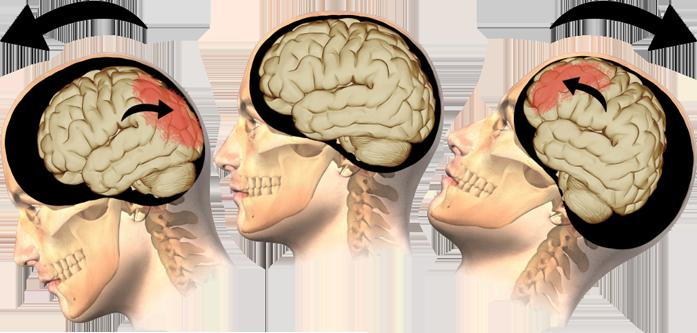
Each year in the United States, there are an estimated 1.6 to 3.8 million sports-related brain injuries (Journal Head Trauma Rehab) of which 136,000 of which occur in young athletes in the high school sports (Journal Athletic Trainer). Many of these statistics may be grossly underestimated over half of a sample of high school football players did not report a head injury, even though it had occurred (Clinical Journal Sports Medicine).
Mild Traumatic Brain Injuries (TBI) occur 100-300 cases per 100,000 visits per year from falls and sports injuries (Archives of Phys Medicine & Rehab). Concussions comprise 9.6% of youth football injuries (JAMA 2015). Less than 10% of concussions result in loss of consciousness, as concussions result of a direct blow to the head, face or neck.
Military personnel are at increased risk for concussive injury due to their exposure to explosions, falls, and motor vehicle accidents (National Center for Veterans Studies) A review of military personnel deployed to Iraq and Afghanistan estimated 8-20% may have sustained a TBI (Psychological and Cognitive Injuries 2008). There is evidence that repeated concussions can result in cumulative neurological damage even when injuries are separated to months or years (American Family Physician).
CONCUSSION DEFINITION
Concussion is defined as a complex pathophysiological process affecting the brain caused by biomechanical forces. Common symptoms are headache, dizziness, nausea, visual disturbances, ringing in ears, balance issues, fatigue irritability, personality changes, difficulty sleeping. Mechanism of injuries are rotational shearing, compressive forces deceleration on impact. Blunt head injuries from acceleration/deceleration result in strain injuries to the cervical spine. Concussion syndrome occurs in motor vehicle impact injuries from whiplash accidents. Cervical spine strength has demonstrated a significant predicator of concussion, i.e. decreasing odds by 5% and warrants a prevention strength program.
NUTRITION
There are several key nutrients that enhance and improve healing during post injury and brain injuries. Tuna Omega 3 Oil is used to support Brain Health and the body’s inflammatory response post injury. Neurotrophin PMG supports healthy nervous system function and neutralizing natural tissue antibodies during auto immune reaction injuries. Ribonucleic Acid is involved in cell multiplication and development, building cells and synthesizing protein, all of which help promote healing and forming new tissue. Cataplex G contains certain factors of the B complex vitamin family that metabolize fats and increase circulation, two important factors in nerve and brain health.
CHIROPRACTIC CARE
Head and neck injury occurs simultaneously due to the delicate complexity between the head and neck region. The upper neck is the connection between the brain and body and is susceptible to injury and misalignment. This connection has Cerebral Spinal Fluid, blood vessels and Brain Stem and nerve pathway to the body. Management of concussion injuries includes physical and psychological therapies as well as upper cervical chiropractic care. (Journal of Upper Cervical Chiropractic Research 2011). Misalignment of the upper cervical spine may be associated with neurological and vascular abnormality. Reduction of spinal misalignment has been found to relieve symptoms, restore health and enable a return to participation in sports. (Journal of Upper Cervical Chiropractic Research 2012)
